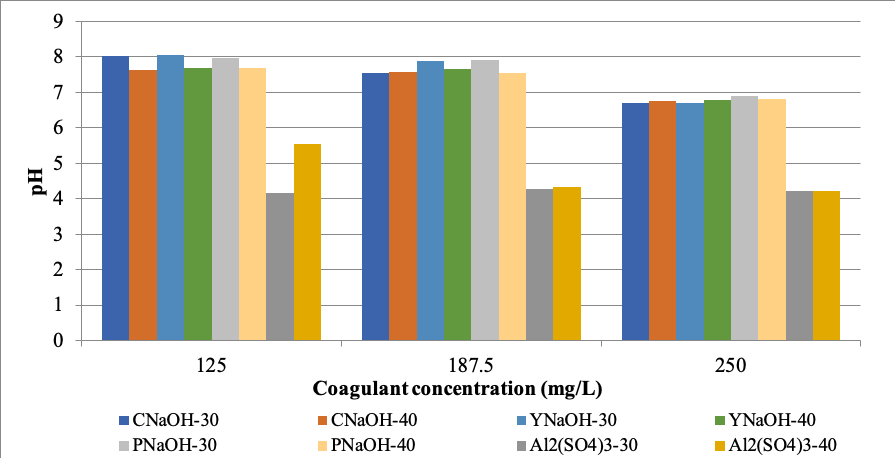 |
|
Coagulation-flocculation is a process that takes place in the water treatment industries with the aim of reducing the repulsive potential of the double electric layer of colloids using the addition of coagulants. This study evaluated the use of cassava (Manihot esculenta), yam (Dioscorea alata) and plantain (Musa paradisiaca) starch, post-harvest residual, in the coagulation-flocculation process for the removal of turbidity in a synthetic water sample. The extraction of the starches was carried out by two methods: alkaline with NaOH and with deionized water. The starches obtained were characterized by physical analysis (color, state and pH), quantifying the nitrogen and carbon content. The effect of the coagulant concentration and the stirring rate on the coagulation-flocculation capacity of the starches under study were assessed as well. It was found that the plantain starch, obtained by both methods, reached the best percentages of turbidity reduction up to 94.6%, becoming an alternative to synthetic coagulants. The results presented in this basic study can be of great value for the scaling of starch production from these residues at an industrial level in the department of Bolívar, Colombia
Keywords: bioflocculant, turbidity, polysaccharide, colloid, water treatment.
|
|
 |

